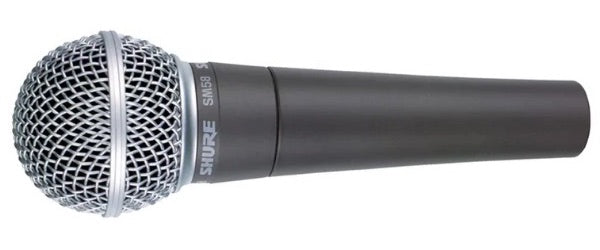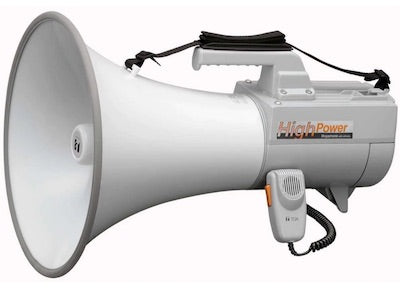The Ultimate Guide to Microphone Cables for Live Sound and Studio-Quality Recording
In the realm of audio recording and performance, the unsung heroes are undoubtedly the microphone cables. These vital conduits of sound serve as the lifeline between the microphone and the amplification or recording equipment, ensuring that your voice or instrument is captured with clarity and precision. Such is their importance in the signal chain, that should they fail, they can ruin a performance or recording. Also in today's powered speaker world they more than often provide the link between the mixing desk and front-of-house as well as monitor speakers. Yet, with an array of types, connectors, and quality standards in the market, choosing the right cable can often be confusing. In this blog post, we shall delve into the world of microphone cables, discussing their various features, the impact they have on audio quality, and the nuances to consider when selecting the perfect cable for your audio endeavours. Whether you're a seasoned sound engineer or an aspiring podcaster, understanding the intricacies of microphone cables is a key step toward achieving impeccable sound fidelity. We will also look at the differences between balanced and unbalanced microphone cables, the importance of shielding, when to use each type for optimal sound quality, and give a few tips on how to care for your microphone cables so they serve you for a long time.
Whether you're setting up a gig in a live venue or recording in a studio, picking the right cable is crucial. Use balanced cables for long runs or in environments with potential for electrical noise, and consider unbalanced cables for shorter, simpler setups like connecting a microphone to a nearby amplifier. Remember, the right choice will enhance audio quality where it counts.

Balanced or Unbalanced Microphone Cables?
Navigating the labyrinthine world of audio equipment can be daunting, and understanding microphone cables is pivotal for achieving pristine sound. Let us illuminate a couple of essential terms that you're likely to come across in the audio sphere: 'balanced' and 'unbalanced' cables. Balanced cables, typically XLR or TRS (Tip, Ring, Sleeve) jacks or phone plugs, have two signal wires plus a ground. This design cleverly reduces interference, making them the gold standard for live audio and studio recording worldwide. Conversely, unbalanced cables, such as the common TS (Tip, Sleeve) jack, carry the signal on a single wire with ground and are more susceptible to noise over longer distances. Basically, these cables can introduce high-frequency attenuation issues such as buzzes, hums, and crackles over distances greater than around 6 metres. Shielding also plays a critical role, cocooning the signal wire from electromagnetic interference and thus preserving the integrity of the sound.
Microphone Cable Quality
Generally, the more expensive microphone cables have more strands of wire in their shielding and better-quality connectors. Their shielding is normally braided which is superior to the spiral and foil shielding employed in cheaper cables. When it comes to cable, high-end cables such as those made from the top-of-the-range Canare L4E6-S offer the highest signal isolation which cancels electromagnetically induced noise from dimmers, fluorescent lighting ballasts, and AC power transformers. This flexible, extra-strong STAR QUAD cable has a very tough, strong PVC jacket as well as far superior shielding to that used in cheap microphone cables, and 40 separate strands in each of its 4 conductors, all helping to make it virtually unbreakable.
They also feature the latest Neutrik XX series 3 pole connectors with black metal housing and gold-plated contacts. The gold plating is anti-corrosive and will over a long term resist oxidization. To learn more about this cable be sure to have a read of Canare's THE STAR QUAD STORY. Both Neutrik and Amphenol design and manufacture quality connectors. Cheaper budget-priced microphone cables generally have cheaper inferior noname connectors, fewer strands of wire in their shielding and conductors, and as well not have as strong or flexible a jacket. Many, if not most, professional rental and broadcast companies prefer to use quad-style (4 conductor) cables for reliability and performance.
3 Top Tips for Maintaining and Extending the Life of Your Microphone Cables
For longevity, abide by these top three tips: store your cables coiled (not knotted), avoid tugging or harsh bending, and keep the connectors clean. By treating your cables with care, you'll ensure they faithfully transmit every note and nuance, whether you're capturing the subtleties of a studio session or electrifying an audience with live sound. Learning how to correctly wind up your cables will ensure that they don't develop kinks and make it quicker and easier when setting up for performances. Avoid tying a knot at the end of your cable and instead consider using a Velcro cable tie.
Carry A Cable Tester
Even if you take all the care in the world of your audio cables, they still can get accidentally damaged, or wear out. An inexpensive cable tester can check your cables for continuity, intermittent shorts, and the presence of phantom power and grounded shields. Check out the Behringer CT100 6-in-1 and CT200 8-in-one cable testers. These can save you from a lot of frustration and even sometimes save your show!
We hope that you have found the above information helpful. Feel free to check out our large range of quality Canare, EWI, and Klotz microphone cables, some of which carry up to a 5-year warranty. For all the above reasons, if you have the budget we recommend the Canare L4E6-S "Starquad" Premium Microphone Cables and EWI Touring Grade MBQN Premium Neutrik XLR Pro Quad Microphone Cables. As always, if we can be of any further assistance to you please Contact Us.
Also in News

Unlock the Power of Your Voice: Perfecting Your Craft with the Legendary Shure SM58 Microphone for Unforgettable Gigs!







Cannon Blogger
Author